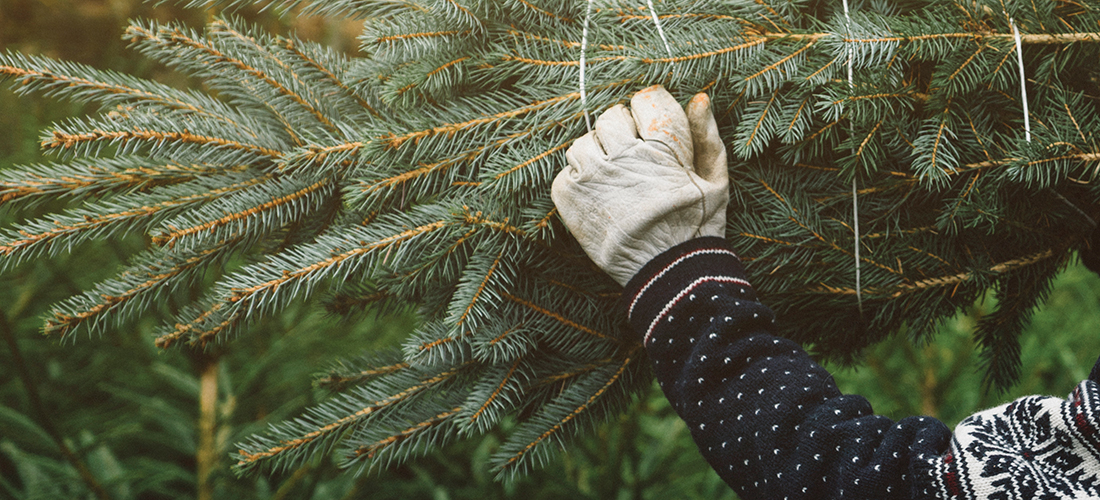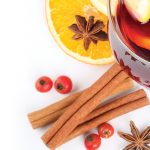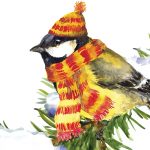
Oh, Christmas Tree!
How North Carolina became the fertile crescent of the Fraser fir
By Ross Howell Jr.
Chances are the tree you decorated for your home this holiday season is a descendant of natives in the North Carolina mountains.
The Fraser fir, Abies frasieri, owes its name to an enterprising, “indefatigable” botanist, a Scotsman named John Fraser (1750–1811). Fraser was born in Tomnacross, near Inverness, Scotland, and moved to London in 1770. There he pursued various trades before — through frequent visits to the Chelsea Physic Garden, founded in 1673 as the Apothecaries’ Garden — he hit upon his true interest, horticulture.
Fraser took up a career in botanical exploration and collecting. After returning from his first voyage to Newfoundland in 1780, he founded a commercial nursery in London to sell the plants he brought back. On later expeditions he trekked the Appalachian mountains, following Native American hunting and trading trails, becoming the first European to discover the Rhododendron catawbiense, which he was able to propagate in England, selling the plants for “five guineas each.”
During his career Fraser would travel the world, locating plants for clients as diverse as William Aiton, the director of The Royal Botanic Gardens at Kew, to Catherine the Great, empress of Russia. Fraser is credited with introducing his eponymous fir, along with about 220 other plant species from the Americas, to Europe. His sons continued in their father’s business, and his grandson John would be elected a member of the Royal Horticultural Society.
The firs John Fraser discovered grow wild only at high elevations — 3,900 feet and higher — in the Appalachian chain from northern Georgia to southwestern Virginia. Mature trees may reach a height of 30 to 40 feet. Their needles are flattened, like the native hemlocks growing at lower altitudes. From September through November, they bear cones upright on their branches, like candles on a nineteenth century Christmas tree.
North Carolina is the center of the Fraser fir’s habitat, and that’s important. According to carolinanature.com, trees can be found wild in nine counties of the Old North State, but in only one county in Georgia, and in only two counties in Virginia and Tennessee. That’s it.
Sadly, like our native hemlocks, Fraser firs are under attack. The number of trees in the wild is being diminished by acid rain, by air pollution, and especially by nasty little creatures called balsam woolly adelgids (whose equally nasty cousins have put native hemlocks at risk). These insects have wiped out whole stands of the Fraser fir, leaving behind only “skeleton forests” on the high slopes of the mountains.
Of course, we don’t clamber over bare rock faces on the steep pinnacles of western North Carolina to harvest Fraser firs today. Remember I said it was likely the tree in your house is a Fraser fir? Just how likely is it?
The North Carolina Christmas Tree Association notes that more than 50 million Fraser firs are grown in our state, and they represent 90 percent of all the trees grown in North Carolina for use as Christmas trees. These commercially grown Fraser firs can get hefty — as tall as 80 feet, with a trunk diameter of a foot and a half.
When you’re relaxing at home this holiday, say, just minutes before Santa’s to arrive, and you’re admiring your Fraser fir’s lights and its sweet balsam fragrance, take a moment to imagine its ancestor, high on a cold North Carolina peak, an upright cone or two pale in the moonlight, reaching toward stars so close they seem to be tangled in its wild boughs. OH
Ross Howell Jr. grew up in the mountains of Virginia, where his family usually harvested a native white pine Christmas tree from the farm woodlands, along with running cedar and spicewood berries for decoration.





